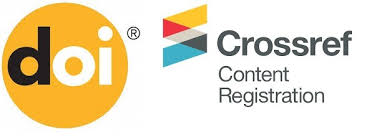A Backpropagation-Based Artificial Neural Network Model for Predicting Pharmaceutical Demand
DOI:
https://doi.org/10.59976/jurit.v3i1.155Abstract
Drug inventory management is a vital component of the healthcare system because it ensures the continuity of essential drug supply and pharmaceutical logistics efficiency. However, most pharmaceutical facilities still rely on manual forecasting methods based on historical trends that are linear in nature and unable to capture the nonlinear relationship between morbidity rates and drug demand. As a result, there is a mismatch between stock and actual demand, leading to shortages or surpluses and an increased risk of drug expiration. This study aims to develop an artificial neural network (ANN) model for predicting drug demand using a backpropagation algorithm to improve the accuracy of estimates and the effectiveness of stock planning. The data used included five years of drug usage records and the prevalence of the ten most common diseases in the Pharmacy Installation. The model was designed with a multilayer perceptron architecture (25–70–25–1) using a log-sigmoid activation function and a trainCGF training algorithm. The training results showed optimal performance with 94.2% accuracy, MSE 0.0135873, and MAPE 5.793%, accompanied by a strong correlation between the target and output (R = 0.99935). This demonstrates the model's ability to learn nonlinear patterns and produce stable and reliable predictions. The implementation of the JST model enables the optimization of drug distribution by reducing the risk of stockouts and overstocking, while also reducing waste due to expiration. This prediction system has the potential to become an adaptive and sustainable decision-making tool in public pharmaceutical supply chain management, in line with the principles of resource efficiency and sustainability of health services.
References
A. Shah et al., “A comprehensive study on skin cancer detection using artificial neural network (ANN) and convolutional neural network (CNN),” Clin. eHealth, 2023.
B. Gülmez, “Stock price prediction with optimized deep LSTM network with artificial rabbits optimization algorithm,” Expert Syst. Appl., vol. 227, 2023, doi: 10.1016/j.eswa.2023.120346.
A. Goel, “The role of artificial neural network and machine learning in utilizing spatial information,” 2023. doi: 10.1007/s41324-022-00494-x.
R. M. El-taweel, “A review of coagulation explaining its definition, mechanism, coagulant types, and optimization models; RSM, and ANN,” 2023. doi: 10.1016/j.crgsc.2023.100358.
S. Nandy, “An intelligent heart disease prediction system based on swarm-artificial neural network,” Neural Comput. Appl., vol. 35, no. 20, pp. 14723–14737, 2023, doi: 10.1007/s00521-021-06124-1.
Q. Guo, “Monthly climate prediction using deep convolutional neural network and long short-term memory,” Sci. Rep., vol. 14, no. 1, 2024, doi: 10.1038/s41598-024-68906-6.
H. Gui, “Spatial distribution, contamination characteristics and ecological-health risk assessment of toxic heavy metals in soils near a smelting area,” Environ. Res., vol. 222, 2023, doi: 10.1016/j.envres.2023.115328.
Q. Guo, “Predicting of Daily PM2.5 Concentration Employing Wavelet Artificial Neural Networks Based on Meteorological Elements in Shanghai, China,” Toxics, vol. 11, no. 1, 2023, doi: 10.3390/toxics11010051.
O. Demirci, “Review of battery state estimation methods for electric vehicles-Part II: SOH estimation,” 2024. doi: 10.1016/j.est.2024.112703.
A. A. Kafy, “Assessment and prediction of index based agricultural drought vulnerability using machine learning algorithms,” Sci. Total Environ., vol. 867, 2023, doi: 10.1016/j.scitotenv.2023.161394.
R. W. Aslam, “Machine Learning-Based Wetland Vulnerability Assessment in the Sindh Province Ramsar Site Using Remote Sensing Data,” Remote Sens., vol. 16, no. 5, 2024, doi: 10.3390/rs16050928.
X. Y. Chew, “Circular economy of medical waste: novel intelligent medical waste management framework based on extension linear Diophantine fuzzy FDOSM and neural network approach,” Environ. Sci. Pollut. Res., vol. 30, no. 21, pp. 60473–60499, 2023, doi: 10.1007/s11356-023-26677-z.
M. S. A. Reshan, “A Robust Heart Disease Prediction System Using Hybrid Deep Neural Networks,” IEEE Access, vol. 11, pp. 121574–121591, 2023, doi: 10.1109/ACCESS.2023.3328909.
R. Kavitha, “Ant Colony Optimization-Enabled CNN Deep Learning Technique for Accurate Detection of Cervical Cancer,” 2023. doi: 10.1155/2023/1742891.
M. Gad, “Groundwater Quality and Health Risk Assessment Using Indexing Approaches, Multivariate Statistical Analysis, Artificial Neural Networks, and GIS Techniques in El Kharga Oasis, Egypt,” Water Switz., vol. 15, no. 6, 2023, doi: 10.3390/w15061216.
A. M. Sajib, “Developing a novel tool for assessing the groundwater incorporating water quality index and machine learning approach,” Groundw. Sustain. Dev., vol. 23, 2023, doi: 10.1016/j.gsd.2023.101049.
S. Nazari-Shirkouhi, “A hybrid approach using Z-number DEA model and Artificial Neural Network for Resilient supplier Selection,” Expert Syst. Appl., vol. 222, 2023, doi: 10.1016/j.eswa.2023.119746.
T. Thorat, “Intelligent insecticide and fertilizer recommendation system based on TPF-CNN for smart farming,” Smart Agric. Technol., vol. 3, 2023, doi: 10.1016/j.atech.2022.100114.
A. Nabavi-Pelesaraei, “Machine Learning Models of Exergoenvironmental Damages and Emissions Social Cost for Mushroom Production,” Agronomy, vol. 13, no. 3, 2023, doi: 10.3390/agronomy13030737.
M. Radak, “Machine learning and deep learning techniques for breast cancer diagnosis and classification: a comprehensive review of medical imaging studies,” 2023. doi: 10.1007/s00432-023-04956-z.
X. Liu, “Global incidence, prevalence and disease burden of silicosis: 30 years’ overview and forecasted trends,” BMC Public Health, vol. 23, no. 1, 2023, doi: 10.1186/s12889-023-16295-2.
Z. Zhang, “State of health estimation method for lithium-ion batteries using incremental capacity and long short-term memory network,” J. Energy Storage, vol. 64, 2023, doi: 10.1016/j.est.2023.107063.
K. M. Hou, “Trends and Challenges in AIoT/IIoT/IoT Implementation,” Sensors, vol. 23, no. 11, 2023, doi: 10.3390/s23115074.
Z. He, “Comparative Analysis of Multiple Deep Learning Models for Forecasting Monthly Ambient PM2.5 Concentrations: A Case Study in Dezhou City, China,” Atmosphere (Basel)., vol. 15, no. 12, 2024, doi: 10.3390/atmos15121432.
Z. Yu, “Integrated solar-powered MEMS-based photoelectrochemical immunoassay for point-of-care testing of cTnI protein,” Biosens. Bioelectron., vol. 223, 2023, doi: 10.1016/j.bios.2022.115028.
G. Bai, “Prognostics of Lithium-Ion batteries using knowledge-constrained machine learning and Kalman filtering,” Reliab. Eng. Syst. Saf., vol. 231, 2023, doi: 10.1016/j.ress.2022.108944.
Y. Zou, “Advancements in Artificial Neural Networks for health management of energy storage lithium-ion batteries: A comprehensive review,” 2023. doi: 10.1016/j.est.2023.109069.
M. I. Shirazi, “Damage assessment in laminated composite plates using modal Strain Energy and YUKI-ANN algorithm,” Compos. Struct., vol. 303, 2023, doi: 10.1016/j.compstruct.2022.116272.
P. N. Srinivasu, “An Interpretable Approach with Explainable AI for Heart Stroke Prediction,” Diagnostics, vol. 14, no. 2, 2024, doi: 10.3390/diagnostics14020128.
M. Zahir, “A review on monitoring, forecasting, and early warning of harmful algal bloom,” 2024. doi: 10.1016/j.aquaculture.2024.741351.
Q. Guo, “Simulating daily PM2.5 concentrations using wavelet analysis and artificial neural network with remote sensing and surface observation data,” Chemosphere, vol. 340, 2023, doi: 10.1016/j.chemosphere.2023.139886.
Y. Wu, “The effect of social media influencer marketing on sustainable food purchase: Perspectives from multi-group SEM and ANN analysis,” J. Clean. Prod., vol. 416, 2023, doi: 10.1016/j.jclepro.2023.137890.
H. P. Varade, “Framework of Air Pollution Assessment in Smart Cities using IoT with Machine Learning Approach,” 2023. doi: 10.1109/ICAAIC56838.2023.10140834.
S. K. Sharma, “A Diabetes Monitoring System and Health-Medical Service Composition Model in Cloud Environment,” IEEE Access, vol. 11, pp. 32804–32819, 2023, doi: 10.1109/ACCESS.2023.3258549.
J. M. Cohen, “Comparative Safety of Antiseizure Medication Monotherapy for Major Malformations,” Ann. Neurol., vol. 93, no. 3, pp. 551–562, 2023, doi: 10.1002/ana.26561.
S. Pitchaiah, “Prediction and performance optimisation of a DI CI engine fuelled diesel–Bael biodiesel blends with DMC additive using RSM and ANN: Energy and exergy analysis,” Energy Convers. Manag., vol. 292, 2023, doi: 10.1016/j.enconman.2023.117386.
G. Gupta, “DDPM: A Dengue Disease Prediction and Diagnosis Model Using Sentiment Analysis and Machine Learning Algorithms,” Diagnostics, vol. 13, no. 6, 2023, doi: 10.3390/diagnostics13061093.
E. Nabrawi, “Fraud Detection in Healthcare Insurance Claims Using Machine Learning,” Risks, vol. 11, no. 9, 2023, doi: 10.3390/risks11090160.
M. Al-Jabbar, “Histopathological Analysis for Detecting Lung and Colon Cancer Malignancies Using Hybrid Systems with Fused Features,” Bioengineering, vol. 10, no. 3, 2023, doi: 10.3390/bioengineering10030383.
N. S. Aghili, “Aromatic Fingerprints: VOC Analysis with E-Nose and GC-MS for Rapid Detection of Adulteration in Sesame Oil,” Sensors, vol. 23, no. 14, 2023, doi: 10.3390/s23146294.
A. A. Tehrani, “Predicting urban Heat Island in European cities: A comparative study of GRU, DNN, and ANN models using urban morphological variables,” Urban Clim., vol. 56, 2024, doi: 10.1016/j.uclim.2024.102061.
C. W. Fei, “Deep learning-based modeling method for probabilistic LCF life prediction of turbine blisk,” Propuls. Power Res., vol. 13, no. 1, pp. 12–25, 2024, doi: 10.1016/j.jppr.2023.08.005.
E. Yıldırım, “Fog-cloud architecture-driven Internet of Medical Things framework for healthcare monitoring,” Med. Biol. Eng. Comput., vol. 61, no. 5, pp. 1133–1147, 2023, doi: 10.1007/s11517-023-02776-4.
W. Fu, “Enhanced degradation of bisphenol A: Influence of optimization of removal, kinetic model studies, application of machine learning and microalgae-bacteria consortia,” Sci. Total Environ., vol. 858, 2023, doi: 10.1016/j.scitotenv.2022.159876.
Downloads
Published
How to Cite
Issue
Section
License
Copyright (c) 2025 Muhtadin Akbar, Carlos Guterres, Ana de Araújo

This work is licensed under a Creative Commons Attribution 4.0 International License.





















